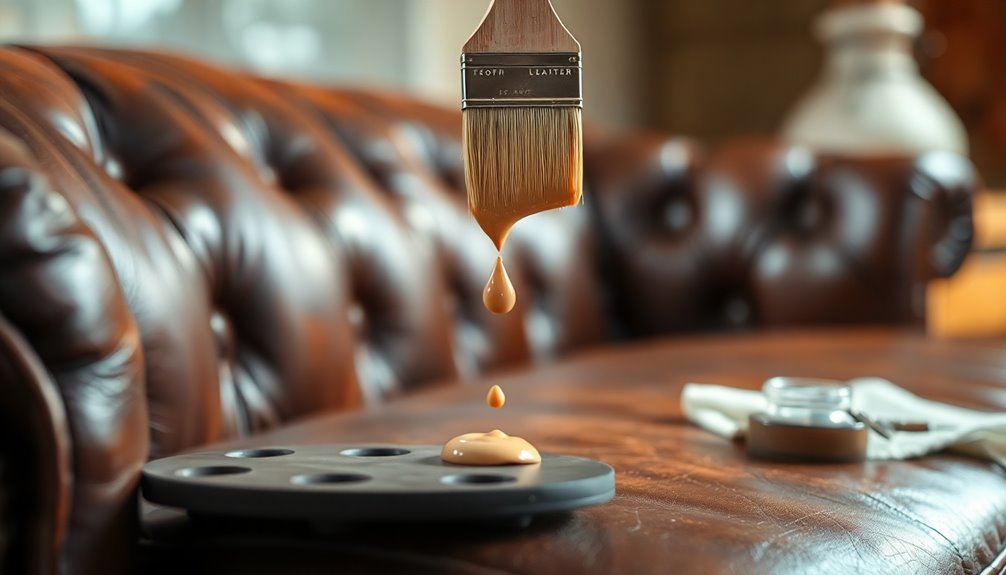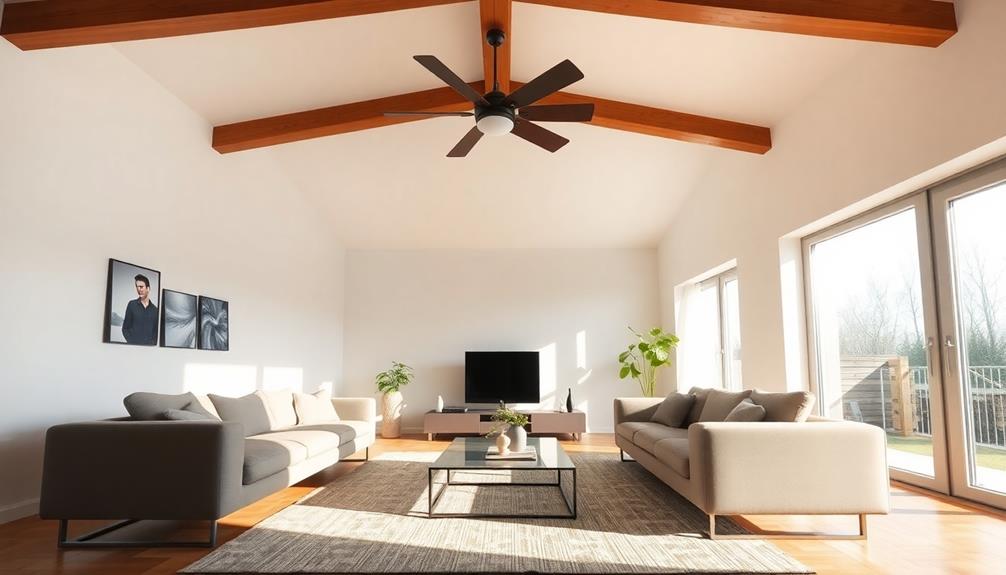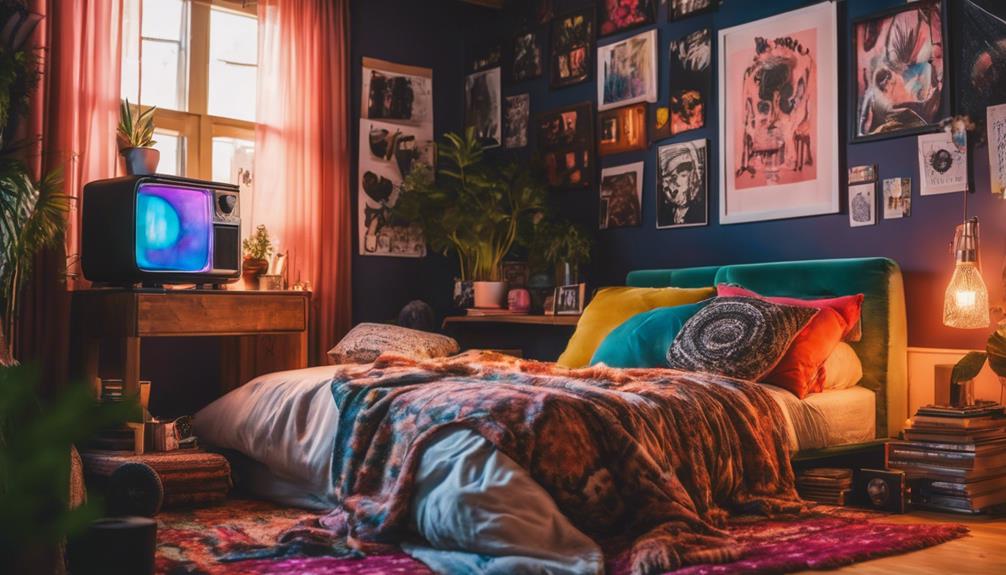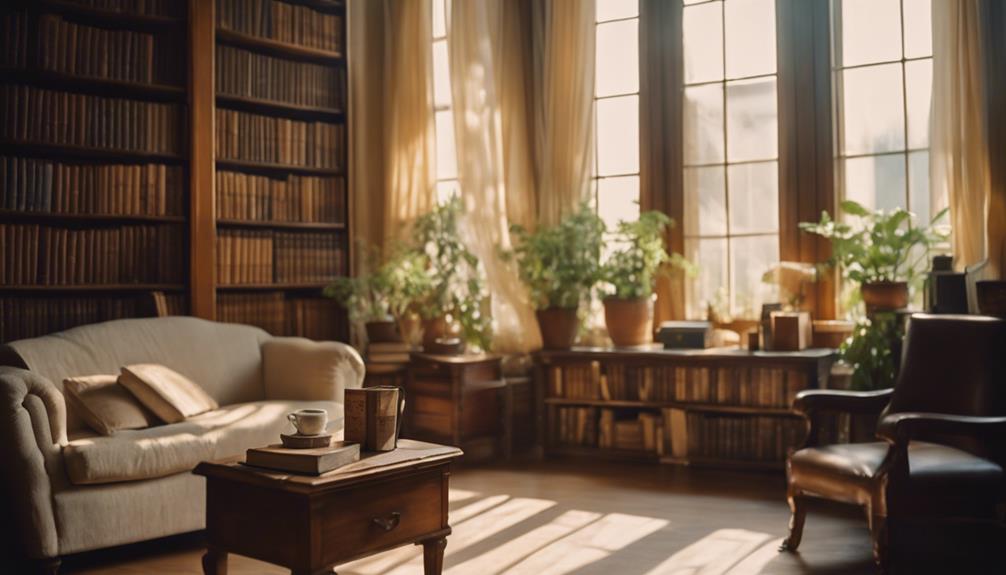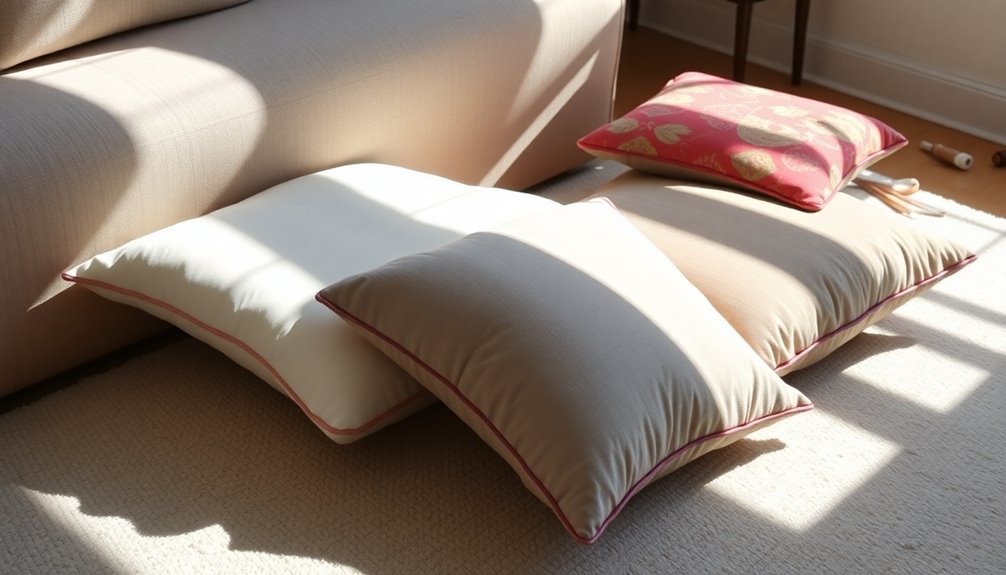To paint your leather sofa, start by cleaning it with a leather stripper or mild soap. Make sure it’s completely dry before you apply paint. Choose specialized leather paint in the color you desire, and use a small brush for tight areas. Apply the paint in thin layers to maintain the leather’s texture. Once painted, seal the surface with a leather-specific sealant to enhance durability. Remember to handle any weak seams or damages before you start. If you’re curious about proper maintenance and advanced techniques, there’s even more to explore. To achieve the best results, it’s essential to know how to prepare a sofa for painting. This includes reconditioning any areas that may be dry or cracked and ensuring that the leather is in good condition for painting. Additionally, consider testing the paint on a small, inconspicuous area first to ensure you are satisfied with the color and finish before proceeding with the entire sofa.
Key Takeaways
- Clean the leather sofa thoroughly with a leather stripper or mild soap and water to prepare the surface for painting.
- Choose specialized leather paint, applying it in thin layers to maintain texture and flexibility.
- Use a small detail brush for precision around seams and intricate areas during the painting process.
- Allow the paint to dry completely before applying a leather-safe sealant for added durability and protection.
- Conduct a test on an inconspicuous area first to ensure desired results before painting the entire sofa.
Introduction
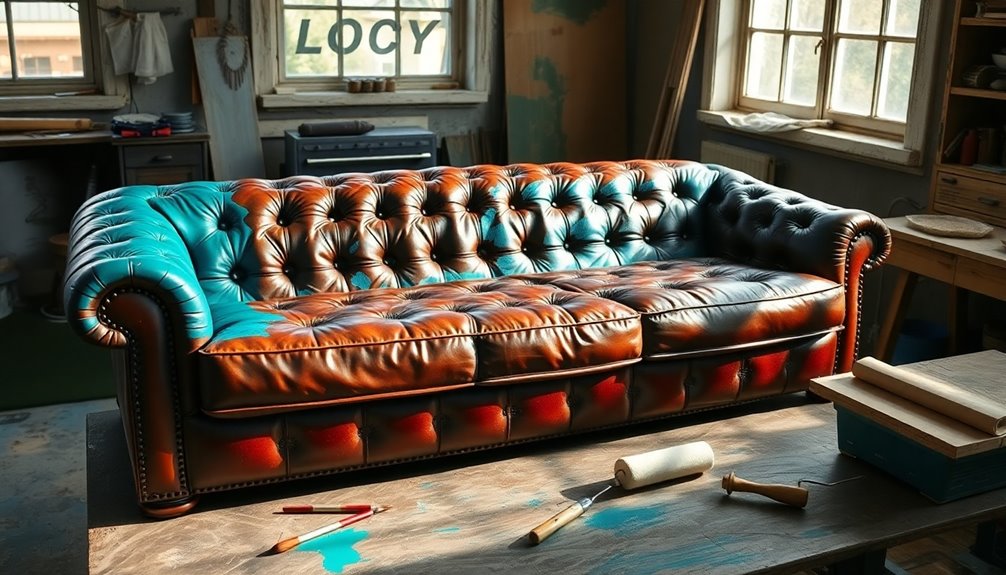
When you decide to paint your leather sofa, it's essential to start with proper care and maintenance. Routine dusting and conditioning keep the leather in good shape, while knowing fabric-specific cleaning techniques helps you tackle any ink or food stains. Taking these steps ensures a smooth painting process and a stunning final result.
Routine Dusting and Conditioning
Keeping your leather sofa looking its best requires regular maintenance, particularly through routine dusting and conditioning. Dusting is essential to maintain the appearance of your sofa, as it prevents dirt from accumulating and causing damage to the leather surface. Use a soft microfiber cloth for dusting; it effectively captures dust particles without scratching the leather.
In addition to dusting, conditioning your leather sofa every 3 to 6 months is crucial. This process helps keep the leather supple and prevents it from drying out and cracking over time. When choosing a leather conditioner, opt for a high-quality product that's free from harsh chemicals. This ensures it nourishes and protects the leather without causing discoloration or damage.
Before applying any conditioning product, always test it on a small, inconspicuous area of the sofa first. This step allows you to check for any adverse reactions, ensuring your leather remains in great shape. By committing to routine dusting and conditioning, you'll help prolong the life of your leather sofa and keep it looking fabulous for years to come.
Fabric-Specific Cleaning Techniques
Cleaning a leather sofa before painting is crucial for achieving a professional finish. Start by using a leather stripper or acetone on a rag to wipe down the surface. This step removes dirt, oils, and any previous finishes that could hinder paint adhesion. Make sure your workspace is well-ventilated, as the strong odors from cleaning agents can be overwhelming.
For edges or stubborn mold, vinegar works wonders as a natural cleaner and disinfectant, helping to prepare the leather for painting. After you've thoroughly cleaned the sofa, allow it to dry completely. This ensures a smooth and even application when you paint leather furniture.
Before you jump into painting, gather all your necessary materials, including leather paint, brushes, and protective gloves. This will streamline the process and help you stay organized. Remember, a clean surface is key to achieving that flawless look you desire, so don't skip this essential step. Taking the time to clean your leather sofa properly will set you up for success in your painting project.
Treating Ink and Food Stains
Leather furniture can be a stylish addition to your home, but it's also susceptible to ink and food stains that can mar its appearance. For ink stains, grab some rubbing alcohol and a cotton swab. Gently dab the stained area, but be careful not to use too much moisture, as it can damage the leather. When it comes to food stains, a mixture of mild soap and water applied with a soft cloth works wonders. Remember to blot the stain instead of rubbing, which can push it deeper into the leather.
Before you go all in with any cleaning solution, always test it on an inconspicuous spot first. This way, you can ensure it won't cause discoloration or further damage. If the stain lingers despite your efforts, consider using a leather cleaner specifically designed for your type of leather. Follow the manufacturer's instructions to achieve the best results. Once you've treated the stains, don't forget to apply a leather conditioner. This will help restore moisture and maintain the leather's suppleness, keeping your sofa looking its best for years to come.
Preventing Scratches and Scuffs
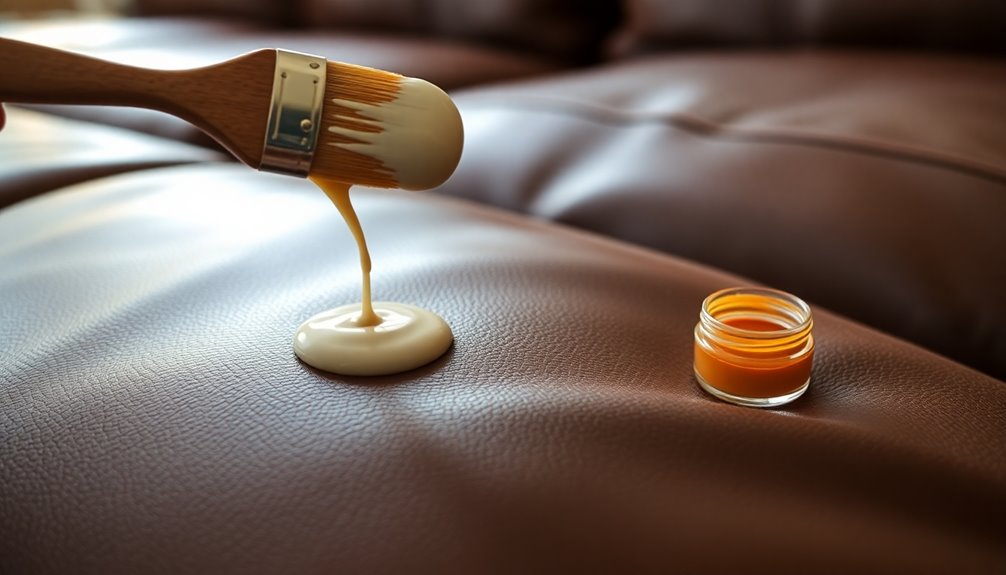
To keep your leather sofa looking pristine, consider using scratch-resistant fabrics or adding protective layers. Regular conditioning treatments can also help maintain the leather's integrity, making it less prone to damage. By taking these steps, you can significantly reduce the risk of scratches and scuffs over time.
Using Scratch-Resistant Fabrics
When selecting materials for your leather sofa, opting for scratch-resistant fabrics can significantly enhance its durability. Look for fabrics specifically labeled as scratch-resistant, such as certain synthetic blends or treated leathers. These materials are designed to withstand daily wear and tear, making them ideal for high-traffic areas in your home.
Pay attention to the rub count when choosing your fabric. Materials with a high rub count, particularly those with 15,000 double rubs or more, typically offer better resistance to scratches and scuffs. Additionally, consider applying protective coatings, such as Scotch Guard, to provide an extra layer of defense against potential damage.
Regular maintenance is crucial in preserving your leather sofa's finish. Use gentle, non-abrasive cleaners to keep your sofa clean and reduce the risk of scratches from dirt and debris. When your sofa isn't in use, incorporating furniture covers or throws can further shield it from scratches caused by pets or sharp objects. By choosing scratch-resistant fabrics and taking proactive measures, you'll ensure your leather sofa remains beautiful and durable for years to come.
Protective Fabric Layers
While maintaining the beauty of your painted leather sofa, incorporating protective fabric layers can be a game-changer in preventing scratches and scuffs. Start by applying a layer of acrylic leather finisher after painting. This creates a protective barrier that enhances durability and shields your sofa from daily wear.
Consider adding a soft, protective fabric cover over the areas you frequently use. This minimizes direct contact and helps reduce wear on your painted leather. Additionally, always clean your leather with a gentle, non-abrasive cleaner to keep its surface intact and lower the risk of scratches from dirt buildup.
Using coasters or placemats on the sofa can also protect against sharp objects and accidental scuffing from items placed on the surface. It's a simple yet effective way to maintain your sofa's pristine condition.
Finally, inspect the painted areas periodically for signs of damage. If you notice any wear, apply touch-up paint as needed. This way, you'll maintain both the protective layer and the overall aesthetic appeal of your beautiful painted leather sofa.
Regular Conditioning Treatments
Regular conditioning treatments are essential for keeping your leather sofa in top shape and preventing scratches and scuffs. By regularly applying a high-quality leather conditioner every 3-6 months, you maintain the moisture balance in the leather, preventing cracks and ensuring it stays supple.
To apply the conditioner effectively, use a microfiber cloth to ensure an even distribution across all areas, especially seams and crevices, which are often overlooked. This comprehensive treatment creates a protective barrier against dirt and oils, enhancing both the appearance and longevity of your sofa.
Consider choosing a conditioner that offers UV protection, as this can shield your leather from sun damage and fading, further reducing its susceptibility to wear. Regular conditioning not only restores the natural luster of the leather but also helps prevent scratches and scuffs, keeping your sofa looking new for years to come.
Incorporating these conditioning treatments into your maintenance routine is a simple yet effective way to protect your investment and enjoy a beautiful leather sofa for years ahead.
Upholstery Stitching and Seams
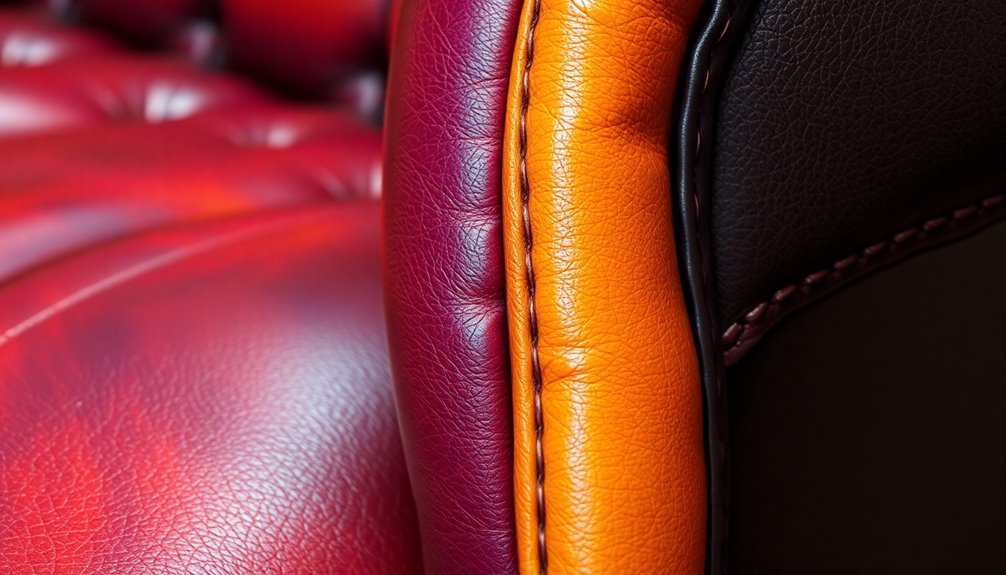
When you're painting your leather sofa, pay close attention to the upholstery stitching and seams, as weak spots can lead to bigger issues down the line. You'll want to consider leather repair techniques to strengthen these areas and maintain their integrity. Plus, reviving leather's natural luster can enhance the overall look once you've finished painting.
Weak Seams and Stitching
Weak seams and stitching can become a major concern for leather sofa owners, often leading to fraying and tearing over time. To avoid this, it's crucial to use high-quality thread and techniques during the upholstery process. Regularly inspect your sofa for signs of wear, especially around weak seams. Catching potential issues early allows for timely repairs, which can significantly prolong the life of your furniture.
When you decide to paint your leather chair, be cautious. Avoid applying paint directly over weak seams, as it may not adhere properly and could worsen existing issues. Instead, consider using a leather conditioner before painting. This helps maintain the flexibility of the seams, reducing the risk of cracking or splitting after the paint application.
If you find weak seams that need resewing, opt for a reinforced stitching technique. Double stitching can enhance durability and provide the support needed in high-stress areas. By taking these steps, you can preserve the integrity of your leather sofa and ensure it remains a comfortable and stylish centerpiece in your home. Additionally, understanding the emotional dysregulation associated with BPD can help in recognizing how stress and anxiety may influence your decision to maintain and care for your furniture.
Leather Repair Techniques
Inspecting your leather sofa for weak seams and stitching often reveals the need for effective repair techniques. Upholstery stitching is crucial for reinforcing the structure and preventing further damage. You'll want to use a heavy-duty needle paired with strong thread, like polyester or nylon, to ensure your repairs last.
When stitching, the saddle stitch technique is your best bet. This involves passing the needle through the same hole from opposite sides, creating a secure grip. For larger tears or damaged areas, consider using leather patches. Make sure they match the color and texture of your existing leather for a seamless look.
Regularly check your seams and stitching to catch any signs of wear early. This proactive approach allows for timely repairs before they worsen, saving you time and effort in the long run. After making your repairs, you can proceed to painting leather, revitalizing your sofa's appearance while maintaining its integrity. By employing these leather repair techniques, you'll not only extend the life of your sofa but also keep it looking fresh and stylish.
Reviving Leather's Natural Luster
Reviving your leather sofa's natural luster requires careful attention to upholstery stitching and seams, as these areas can significantly impact the overall appearance. When you paint your leather sofa, focus on these details to avoid paint clumping or obscuring the intricate stitching. Use a small detail brush to meticulously paint around the seams, ensuring you achieve even coverage without disrupting the stitching pattern. This approach helps maintain your sofa's original design integrity.
It's advisable to apply paint in thin layers, allowing each coat to dry completely before tackling the seams. This method preserves the texture and prevents oversaturation, which can dull the leather's natural shine. Once you've finished painting, consider applying a sealant specifically designed for leather. This extra step can enhance the durability of painted seams and stitching, protecting your hard work.
Don't forget that regular maintenance, including cleaning and conditioning, will keep your painted seams and stitching looking fresh. By following these tips, you'll ensure that the overall aesthetic of your leather sofa remains intact and vibrant, reviving its natural luster beautifully.
Personalized Color Choices
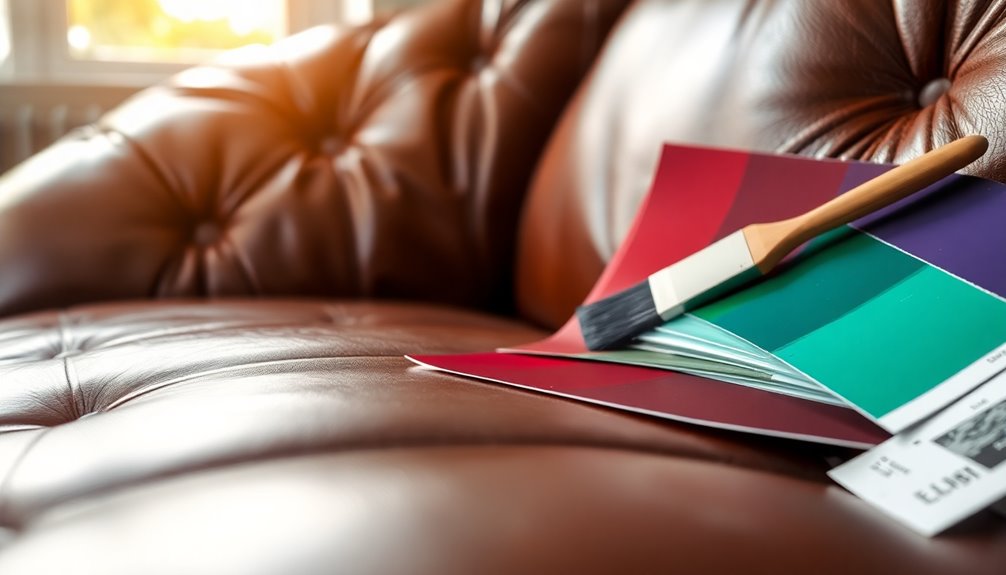
When it comes to painting your leather sofa, your color choices can truly transform the piece into a reflection of your personal style. Using specialized leather paint, like Angelus Leather Acrylic, gives you access to over 30 shades, allowing for personalized color choices that align with your decor.
If you want a vibrant finish, consider lighter colors, as they often provide better coverage than darker shades. Don't hesitate to mix paints to create unique hues that perfectly match your aesthetic; just remember to test small amounts first to ensure you achieve the desired tone before committing to a full application.
Popular color selections include earthy tones like tan and chestnut, which can enhance both rustic and contemporary spaces. Additionally, experimenting with finishes—such as matte or high gloss—can elevate the visual appeal of your painted leather. This way, you can create a stunning look that not only rejuvenates your sofa but also showcases your personal style. So, take your time exploring the options, and let your creativity shine through with every brushstroke!
Seasonal Leather Maintenance Tips
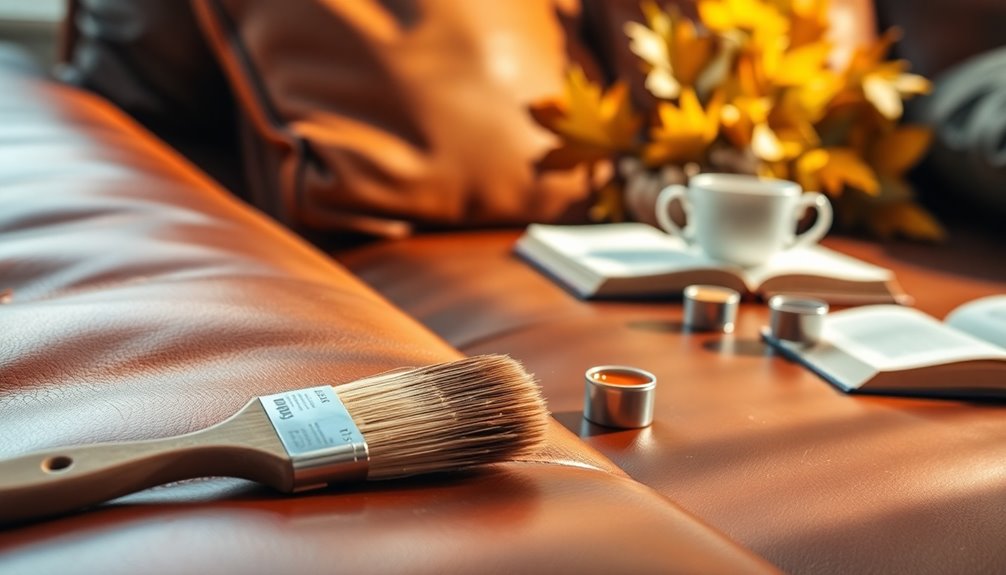
To keep your leather sofa looking its best throughout the year, regular maintenance is essential. Start by cleaning your sofa regularly with a damp microfiber cloth to remove dust and prevent buildup that can lead to stains or deterioration. Aim to apply a leather conditioner every 3-6 months to maintain its suppleness and prevent cracking, especially in dry or low-humidity environments.
During seasonal changes, pay attention to humidity levels in your home. Extreme dryness can drain moisture from the leather, making it brittle. Consider using a humidifier if you live in a dry climate. Additionally, protect your leather from direct sunlight by rearranging furniture or using window treatments. This helps avoid fading and drying out the material.
When entertaining during the holiday season, it's wise to apply a leather-safe protector spray to guard against spills and stains. This extra layer of protection will help keep your sofa looking pristine. By staying proactive with these maintenance tips, you'll ensure your leather sofa not only looks great but also lasts for years to come.
Conclusion
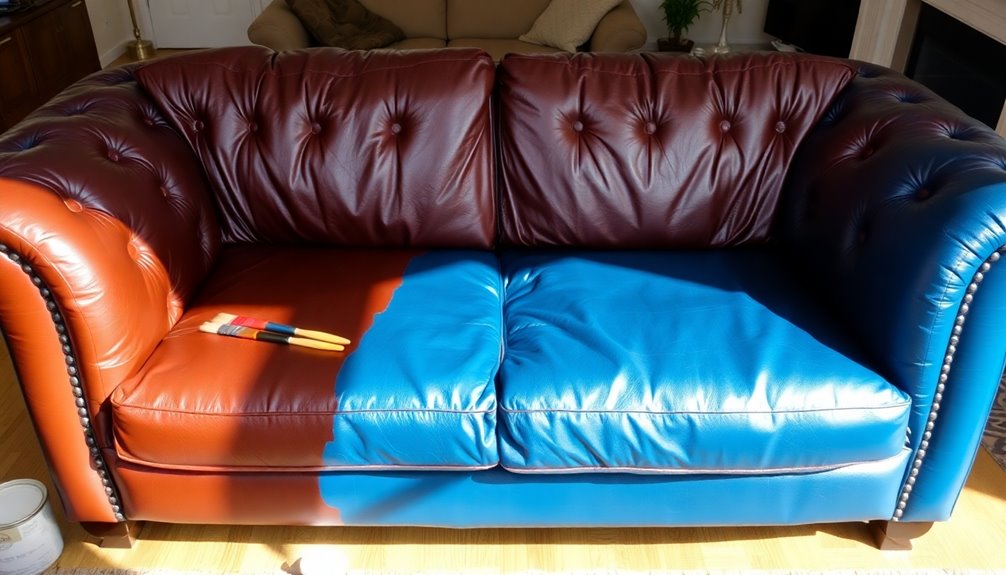
Maintaining your leather sofa is key to its longevity, and if you're looking for a fresh look, painting offers a fantastic solution. By using high-quality products like Angelus Brand Leather Paint, you can rejuvenate your sofa's appearance while making it uniquely yours. The painting process typically requires at least two coats, with a 24-hour drying time in between.
Start by thoroughly cleaning the leather with a deglazer or acetone to remove any dirt and oils, ensuring the paint adheres properly. Just as you'd take care of your leather shoes, regular maintenance checks are crucial for your sofa as well. After the final coat, applying a sealant like Angelus Acrylic Finisher will enhance durability and keep your new finish protected.
Allow a full day for the sealant to dry before using your sofa. Remember, touch-ups may be necessary over time to maintain its aesthetic appeal. With the right approach, you'll not only breathe new life into your leather sofa but also enjoy a personalized piece that complements your home decor beautifully. So get started and transform your sofa into a stunning focal point!
Frequently Asked Questions
Can a Leather Couch Be Painted?
Yes, you can paint a leather couch! To get started, you'll need specialized leather paints that adhere well, like Angelus Leather Acrylic Paint. First, clean your couch thoroughly with acetone or a leather stripper to remove oils and dirt. Apply two to three thin coats, letting each one dry for 24 hours. Don't forget to finish with a sealant to protect your newly painted surface. Regular maintenance will help keep it looking fresh!
What Paint Will Stick to Leather?
If you're looking for paint that sticks to leather, consider using Angelus Leather Acrylic Paint or Reluv Leather Renew. These paints are specially formulated for leather surfaces, ensuring excellent adhesion and flexibility. Make sure to clean the leather thoroughly with acetone or a degreaser to remove any oils before painting. For faux leather, applying a primer like Ultra Grip can enhance adhesion and prevent peeling. Your project will look great when using the right products!
What Paint Stays on Leather?
If you want a paint that stays on leather, consider using Angelus Leather Acrylic Paint. It's designed specifically for leather, ensuring excellent adhesion and flexibility. You'll find its runny consistency makes application easy, often needing just two coats for full coverage. Remember to prep the leather with a deglazer to enhance paint adherence. Always test the paint on a small, hidden area first to ensure you get the desired results before going all in.
How to Change the Color of a Leather Sofa?
To change the color of your leather sofa, start by cleaning it thoroughly with a leather stripper or acetone. This removes dirt and oils that interfere with paint adhesion. Next, apply a deglazer and let it dry. Once prepped, use high-quality leather acrylic paint in thin coats, allowing time to dry between applications. For added durability, finish with a sealant to protect your new color from wear and tear.
